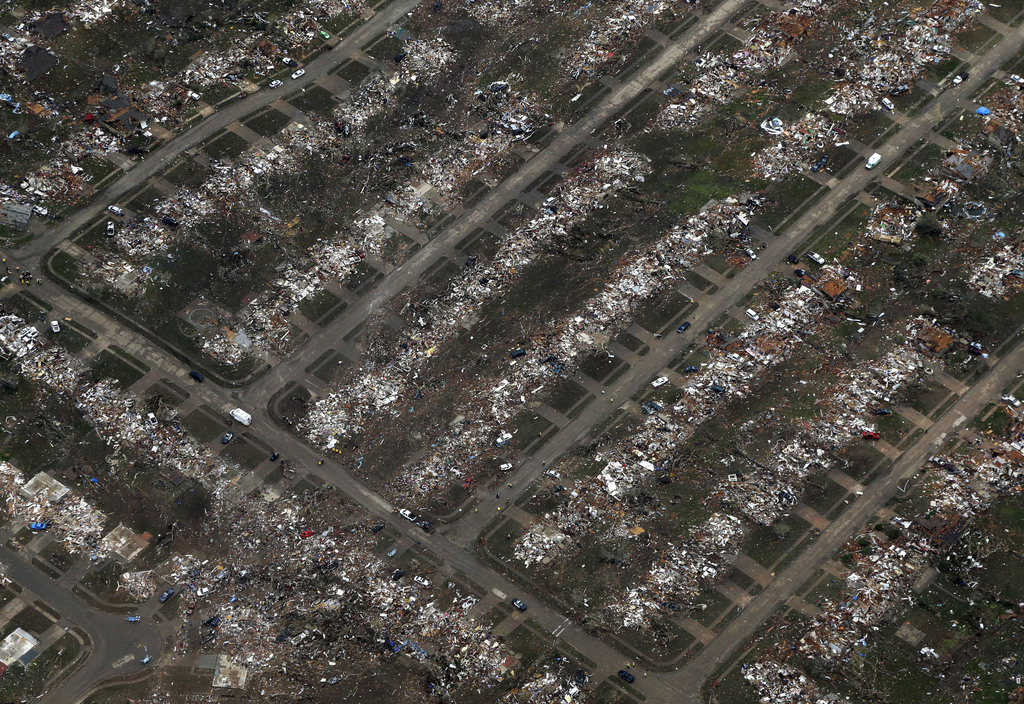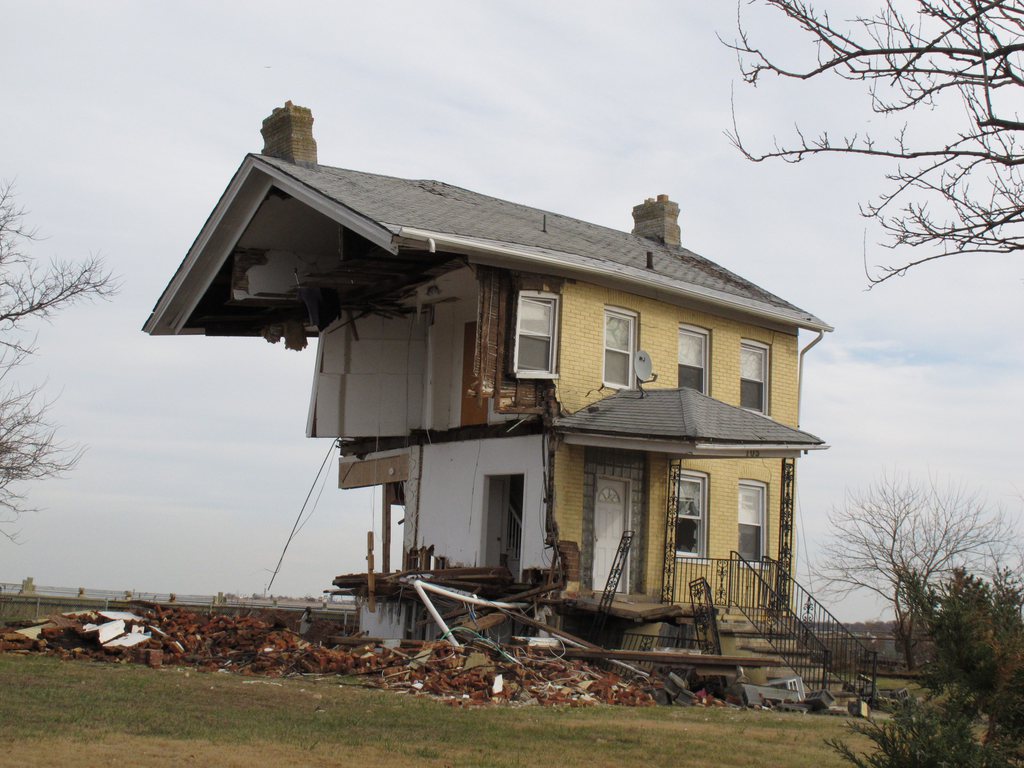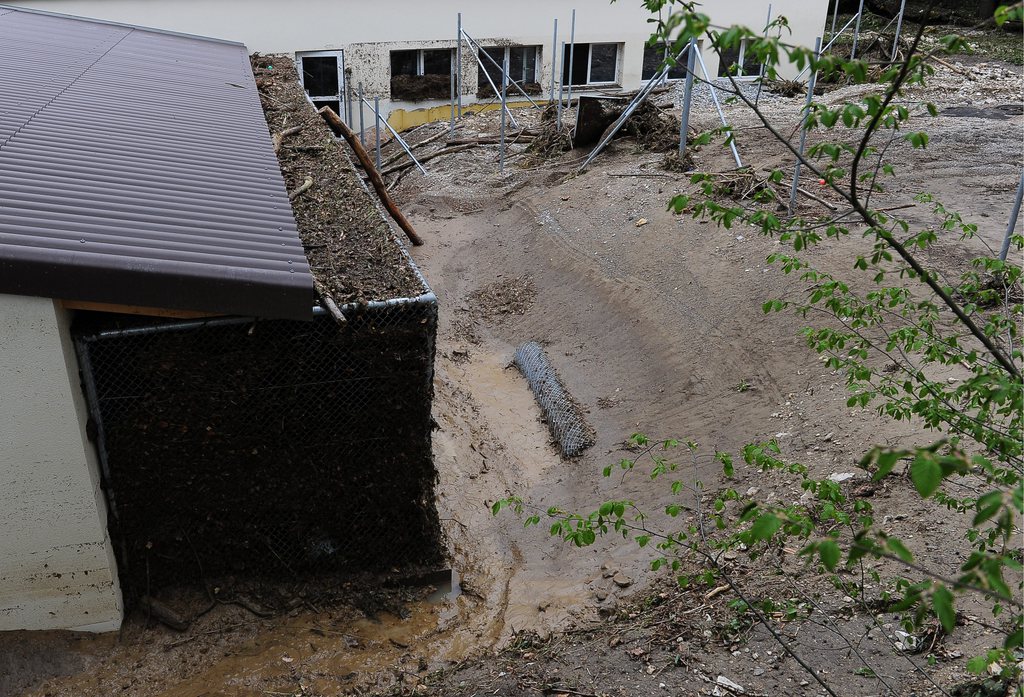Natural disasters cost insurers $17 billion

Economic losses from natural catastrophes and man-made disasters totalled $56 billion (CHF51 billion) in the first half of 2013, according to preliminary estimates by Swiss Re, the world’s second biggest reinsurer.
A report issued on Wednesday by the Zurich-based company said that $20 billion of the total losses were covered by the global insurance industry – lower than the $21 billion in the first half of 2012 and also below the average of the past ten years. Of the losses covered, $17 billion were caused by natural catastrophes, mainly flooding.
Man-made disasters triggered an additional $3 billion in claims, unchanged from the first half of 2012. The overall economic losses to society of $56 billion were below the $67 billion of the same period last year.
In the first half of 2013, disasters claimed 7,000 lives.
‘Ever-present disaster threat’
Flooding was a main driver of natural catastrophe-related losses, causing an estimated $8 billion in insurance claims globally. Despite the drop in insurance pay-outs overall, the pay-outs for flood-related damage in 2013 have been the second-highest ever.
In June, heavy rains in central and eastern Europe caused massive floods that resulted in economic losses of close to $18 billion and claimed 22 lives. These floods alone cost the insurance industry an estimated $4 billion.
This year’s flooding in Europe has also been more expensive than the 2002 floods in the same region which cost the industry over $2 billion ($3 billion at current prices).
Heavy rains and subsequent flooding also hit Alberta, Canada, in June, generating insured losses estimated at $2 billion, the highest insured loss ever recorded in the country.
In January, Cyclone Oswald brought flood damage yet again in Australia, amounting to $1 billion in insured losses. Furthermore, India, Southern Africa, Indonesia and Argentina likewise experienced heavy rains, which caused large-scale flooding and the loss of many lives.
In India, 1,150 people died as a result of flooding in June and many more are still missing. This flood caused the most loss of life as a single event in the first half of 2013.
“Flooding continues to wreak havoc across all areas of the world. No one is immune from this ever-present disaster threat,” said Jens Mehlhorn, head of flood risk at Swiss Re.
“Sadly, without insurance, the impact of these events is severe for many. While we cannot stop future floods, we believe that preventative actions can be taken to mitigate the overall impact of extreme weather events.”
On August 8, Swiss Re beat second-quarter earnings predictions with an unexpected net profit that was nine times greater than in the same period in 2012.
The company posted a second-quarter net profit of $786 million (CHF723 million) – compared with $83 million last year.
Tornadoes
The severe spring weather spawned deadly tornadoes in the US Midwest. A series of tornadoes in May left 28 people dead, and gave rise to insurance claims of $1.8 billion.
“Though 2013 has so far been a below-average loss year, the severity of the ongoing North Atlantic hurricane season, and other disasters such as winter storms in Europe, could still increase insured losses for 2013 substantially,” said Kurt Karl, Swiss Re chief economist.

In compliance with the JTI standards
More: SWI swissinfo.ch certified by the Journalism Trust Initiative



You can find an overview of ongoing debates with our journalists here. Please join us!
If you want to start a conversation about a topic raised in this article or want to report factual errors, email us at english@swissinfo.ch.